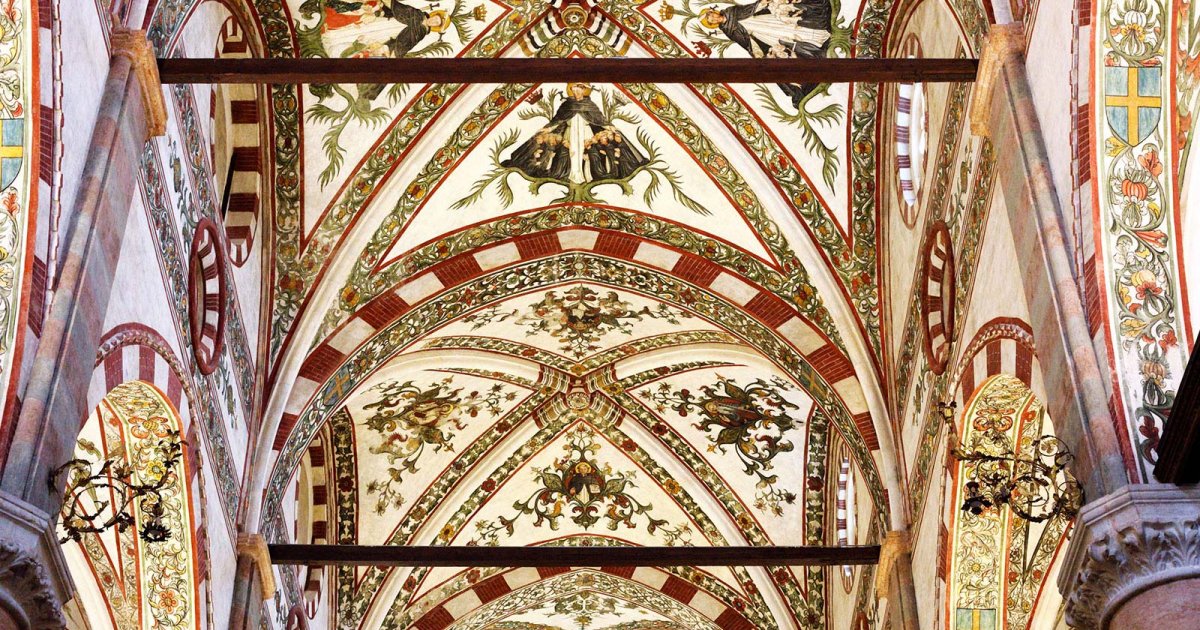BASILICA OF SANTA ANASTASIA, Presentation And Interior
 Language: English / USA
Language: English / USA
Hi, my name’s Jill, and I’m your personal guide. Along with MyWoWo, I’d like to welcome you to one of the Wonders of the World: the Gothic Church of Sant’Anastasia, the largest in Verona.
Built by Dominican friars starting from 1290, the church can be found at the edge of the Old Town: the back part of it, with a high, pointed bell tower next to it, looks onto the Adige River. Sant’Anastasia Church is located in a picturesque square, closed off on the left by a number of fourteenth-century buildings in brick and stone, such as the little church of San Giorgetto and the entrance to the convent, topped with a canopied sarcophagus.
The simple, austere facade is unfinished, and only the bottom part is decorated with a large portal in the center featuring fine sculptures from the 14th century.
Now press pause and press play again once inside.
The triple-nave interior, divided by pillars, has a luminous fourteenth-century structure, embellished with exuberant Gothic and Renaissance decorations. The altars, frescoes and relief decorations are so elaborate that the church resembles an art gallery.
The decorations on the floor, dating to 1462, are predominantly black and white, the colors of the habit and cloak of the Dominican order.
Resting against the first two pillars are the Renaissance holy water fonts, supported by the popular statues of the “hunchbacks”. Along the side walls is a continuous series of large altars, decorated with paintings and frescoes.
The chapels are even more important.
In the main chapel with the high altar, decorated by a large fourteenth-century fresco of the Last Judgement, is an elaborate burial monument from 1425, featuring an original combination of painting and sculpture.
The chapel to the right of the high altar is covered in terracotta tiles created by Michele da Firenze around 1435; on the arch is a splendid fresco of Saint George and the Princess, a masterpiece by Pisanello, which I’m just about to tell you about.
In the last chapel on the right, you can see a number of tombs and the votive fresco of the Cavalli family being presented to the Virgin Mary, painted in late 14th century by Altichiero, the most significant painter of the century in Verona.
An interesting fact: for a long time, the fresco by Pisanello was displayed in the sacristy of the church. After some lively debate, it was put back in its original place, at the top of the arch. There is a video that helps the observer note some details that would otherwise be difficult to spot.



